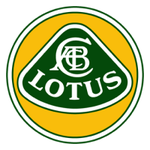Description
H&H Classic Auction @ The Imperial War Museum, Duxford/ Cambridgeshire
9th October, 2024 13:00
1980 Lotus Esprit 'Essex' Turbo Active Suspension
Pre-Production Essex Turbo that was later developed with Active Suspension
Estimate
£70, 000 - £80, 000
Registration No: GCL 269Y
Chassis No: SCCFC20A8DHD10895
MOT: Exempt
Originally built as a Pre-Production Essex Turbo Esprit in 1980 and loaned to the DeLorean Motor Company
Thereafter developed by Lotus Engineering and fitted with experimental Active Suspension for Formula One
Retained by Lotus Cars on long-term display until 2016 and only one private keeper since
Just 6, 500 miles from new
Extensively but sympathetically restored in current ownership at a cost of in excess of £60, 000
A highly significant car in the history and development of Lotus!
Chassis number SCCFC20A8DHD10895 is no ordinary Lotus Esprit Turbo, and it is against all odds that it still exists today! With a ‘Signed from Production’ date of the 8th of July 1980 in its initial guise, the Esprit began life as a pre-production Essex Turbo Esprit and according to the Lotus Certificate of Vehicle Provenance that accompanies the car, it is believed to be the 1st pre-production Essex Esprit built. Thus, originally finished in the colours (Essex Blue) of Lotus F1 sponsors of the time, the Essex Overseas Petroleum Corporation, thereafter the Esprit was loaned to the DeLorean Motor Company. Upon the return of ‘10895’ to Lotus in c. 1982/ 83, it was provided to Lotus Engineering and was the first car built by Team Lotus with experimental Active Suspension for Formula One (and possibly the first car worldwide with it) and was repainted into the John Player Specials colours with JPS now the Lotus F1 sponsor. With Lotus at the forefront of Active Suspension for some time, this Esprits significance cannot be overlooked.
Road registered in 1983 as ‘GCL 269Y’, it was used for promotional activities such as featuring in a Top Gear episode and being test driven by Nigel Mansell, and it is even reputed that Colin Chapman personally sat in the car shortly before his death. When the promotional and development activities ceased, much like many prototypes at Lotus, the history was deemed insignificant, and the Esprit was left behind in Hangar 4 (Service) at Lotus under a cover for numerous years until its fate seemingly was doomed for even worse. Spotted by the bosses of the new owner's Proton, the Active Esprit was ordered for scrapping, but fortunately, Brian Angus (the Esprit Platform Manager for fourteen years) knew its significance, and continually hid the Active Esprit in several different locations on site, and got his knuckles rapped at one stage for doing so!
As part of an audit of the Essex Esprits in 2005 following the hike in interest and value of them, the Active Esprit saw the light of day again, and Brian Angus fortunately found someone within Lotus' Senior Management who concurred with his belief of the significance of the car and so ‘GCL 269Y’ was tidied up and mechanically, it is understood that only renewed fuel lines, a new battery and fresh fuel were required to bring the Esprit back to life. Placed on display in the White Building at the factory, it remained on display at Lotus for many years, in fact, such a length of time that it resided in the White Building before its completion and therefore during the building's completion, the internal walls were built around the Esprit!
Changes in financial priorities led to the firm having to raise money and so the Esprit was sold to the current vendors, a father and son ownership (the former having worked at Lotus as a development engineer for ten years), who are ‘diehard’ Lotus enthusiasts having had a significant collection of Lotus’, and who had persistently enquired as to the availability of ‘GCL 269Y’. Removal of the Active Esprit was no easy task with the only available exit being a personnel door and extraction involved placing the car on a rotisserie to reach the outside world sideways! From there, the vendors embarked upon an exhaustive restoration that took approximately two years to complete and with expenditure understood to have surpassed £60, 000 in total. The restoration work included full engine and gearbox overhauls; renewed front and rear bulkheads; re-wiring; full brake refurbishment, new exhaust system; suspension overhaul; and amongst much more with most of the work completed by specialists, NTC Cars. Cosmetically, the restoration's focus was to maintain originality as much as possible and thus the original paintwork was carefully revitalised and pleasingly the original hand-painted decals remain. The original interior was restored, recoloured, and re-connolised, and the sympathetic focus of the restoration can be seen throughout by the retaining of items such as the model-specific cam cover and Active Suspension control panel.
Starting readily and running well during our recent photography session, the Active Suspension system and original computer control panel are still present and have been plugged into a computer to produce data, although further research and attention would be required to get it operational (a firm who can complete this task have been located however). Offered now having covered just 6, 500 miles, the Lotus is offered with a history file that contains the Lotus Certificate of Vehicle Provenance; Security Release Pass for Development, Sales, PR, and Executive Vehicles; a copy of Car Magazine from November 1983 featuring the car; copy of Absolute Lotus featuring it; correspondence with Brian Angus; photos of the removal from the factory; copy of the marketing specification sheet; readings from the active suspension; and sundry paperwork. Also accompanying is a current V5C document which notably shows just one former keeper, ‘Team Lotus International Ltd’.
Only offered now due to a change of focus to increased amounts of historic racing (in Lotus’!) by the vendors, the Active Esprit is undoubtedly not one to miss for a collector or enthusiast, being such a highly significant car in the history and development of Lotus, with Active Suspension, of course, becoming prevalent in Formula One until it was banned by the FIA in 1994!


















